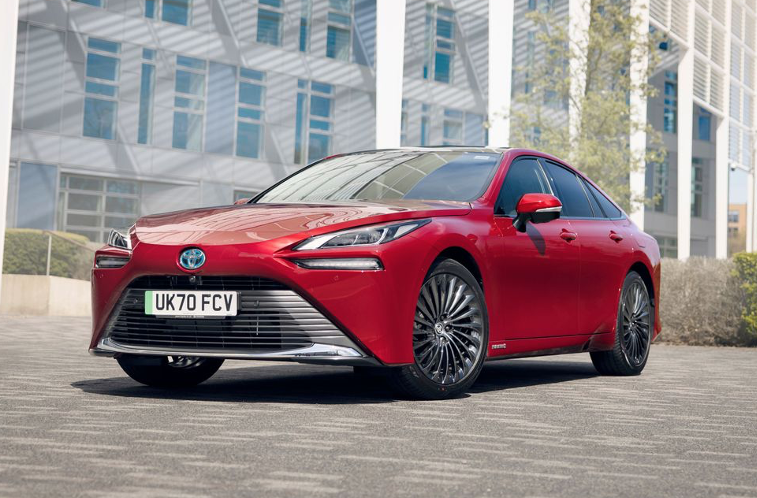Hydrogen versus Electric
While most of the giant car manufacturers begin rolling out EVs, Toyota are showcasing their updated hydrogen-powered ‘Mirai’ for a price tag starting at £49,995. So, what is the rationale behind this move by Toyota, I mean, seriously, who is going to spend over £50k on a car that you can’t fuel. Do you know where your local hydrogen gas station is?
While the adoption of EVs and hybrids is growing, there is still a huge reluctance by car owners to convert from fossil fuel-powered vehicles to electric, firstly because of the high cost of EVs and secondly the poor and over-complicated charging network. Therefore, by definition, you would imagine that a hydrogen-powered car hasn’t got a cat in hell’s chance of selling.
Undoubtedly, hydrogen fuel cells are more suited for heavy transport such as buses and trucks, and this is where the development money is currently being spent and where the technology will evolve.
Hydrogen-powered cars still have a longer range than pure electric cars, with a full hydrogen tank lasting around 300 miles. However, EVs are catching up, albeit with much larger batteries, which in turn leads to an increase in both vehicle weight and charging times.
Hydrogen is a clean fuel that, when consumed in a fuel cell, produces only water. The same can be said about an EV that produces no exhaust at all. But, and it’s a big but, both EVs and hydrogen-powered vehicles require fossil fuels to create the electricity for charging batteries and for the extraction of hydrogen from natural gas.
The sceptics’ first argument against hydrogen vehicles is that they are less efficient than EVs because hydrogen doesn’t occur naturally, it must be extracted and then compressed in fuel tanks. Conversely, lithium-ion battery production for EVs is also very energy-intensive and requires huge amounts of mined materials.
The environmental impact and energy efficiency of hydrogen depend on how it is produced. Today, 95% of hydrogen is produced either from wood or from fossil fuels, such as natural gas and oil. The most common hydrogen production process is natural gas reforming, sometimes called steam methane reforming, because it uses high-temperature steam. Hydrogen can also be produced through electrolysis, where an electric current splits water into hydrogen and oxygen.
So, on balance, which is the better solution for our transport needs and the environment, hydrogen fuel cells or EVs? Well, neither of them have entirely green credentials, unless their power-hungry production needs can be harnessed from renewable energy sources such as wind, waves, or the sun.


